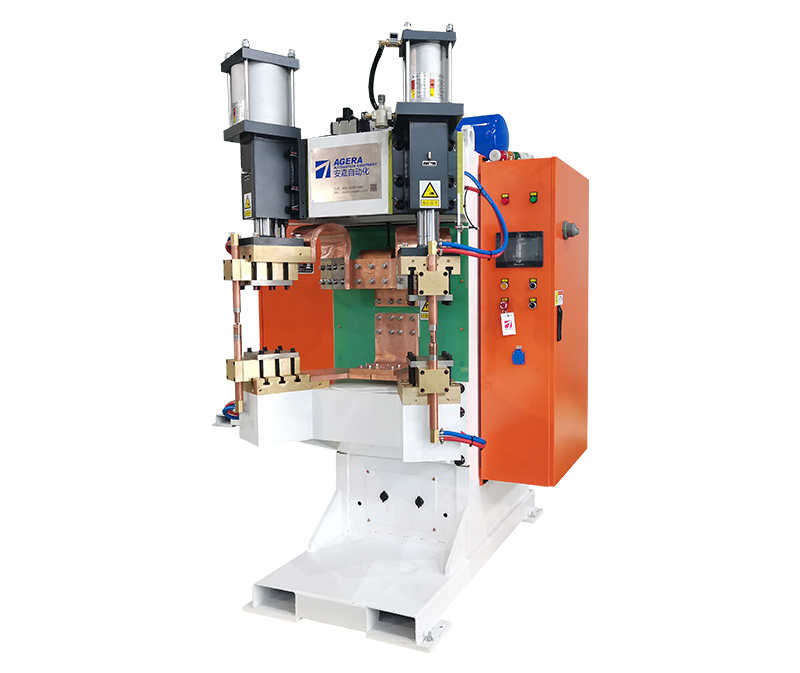Usage Details of Nut Spot Welding Machine
The effective utilization of a nut spot welding machine requires careful attention to various operational aspects. This article delves into the specific usage details of a nut spot welding machine, highlighting essential steps and considerations for achieving consistent and high-quality welds.
- Workpiece Preparation: Before initiating the welding process, it is crucial to prepare the workpieces properly:
- Ensure that the surfaces to be welded are clean and free from contaminants, which can adversely affect weld quality.
- Verify the alignment and positioning of the workpieces to ensure accurate and precise weld placement.
- Electrode Selection and Inspection: Select suitable electrodes based on the material and dimensions of the workpieces:
- Inspect electrodes for any signs of wear, damage, or deformation before use.
- Ensure proper electrode alignment to facilitate uniform pressure distribution during welding.
- Welding Parameters Adjustment: Adjust the welding parameters according to the specific materials and joint requirements:
- Set appropriate welding current, time, and pressure settings for optimal weld quality.
- Fine-tune the parameters based on material thickness and desired weld penetration.
- Pre-Pressure Stage: Execute the pre-pressure stage to establish proper contact between the electrodes and workpieces:
- Apply controlled force to ensure proper alignment and contact between the surfaces to be welded.
- Monitor the force application to prevent excessive deformation or material damage.
- Welding Process: Initiate the welding process following the pre-pressure stage:
- Monitor the welding process to ensure consistent current flow and electrode pressure.
- Maintain stable welding conditions to prevent overheating or insufficient fusion.
- Post-Weld Inspection: After completing the weld, inspect the joint for quality and integrity:
- Examine the weld bead for uniformity, penetration, and any signs of defects.
- Ensure that the joint meets the required specifications and standards.
- Cooling and Cleaning: Allow the welded joint to cool adequately before further handling:
- Proper cooling prevents thermal stress and distortion in the welded area.
- After cooling, clean the welded joint to remove any residue or contaminants.
- Record Keeping: Maintain comprehensive records of each welding operation:
- Document welding parameters, material specifications, and any deviations from standard procedures.
- Records provide valuable insights for quality control and process improvement.
The successful use of a nut spot welding machine demands meticulous attention to detail at every stage of the process. From workpiece preparation and electrode selection to parameter adjustment and post-weld inspection, following these usage details ensures consistent, high-quality welds. Adhering to proper procedures and continuous process monitoring contribute to efficient production and reliable weld results.
